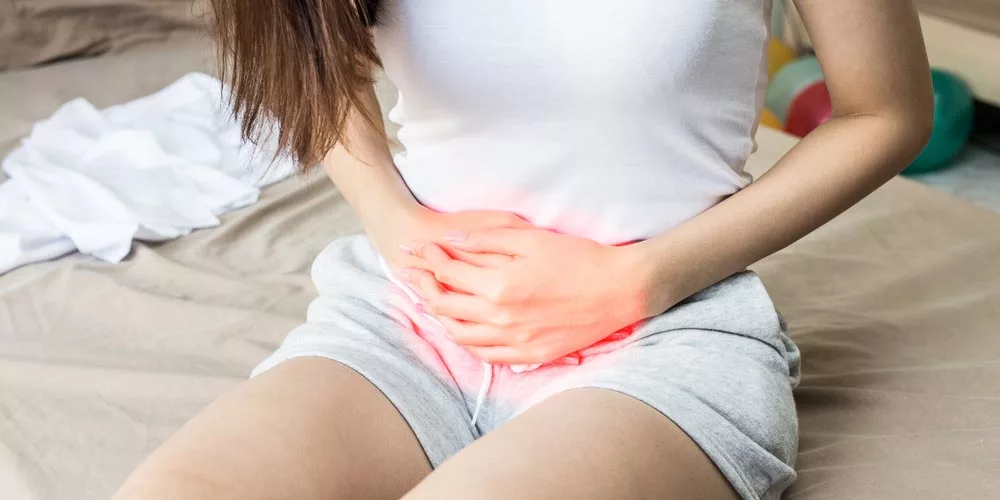
Vulvovaginal candidiasis (commonly known as yeast infection) is a widespread gynecological condition caused by the overgrowth of yeast-like fungi from the genus Candida, affecting 3 out of 4 women during their lifetime.
The term “overgrowth” is essential in the definition of this condition, as the mere presence of Candida is NOT a disease. Candida is NORMALLY found in the vagina of a HEALTHY woman and does NOT require treatment.
Why Does Yeast Infection Occur?
Yeast infection occurs due to an imbalance between the “good” and “bad” vaginal microflora. The number of lactobacilli, which inhibit the growth of Candida, decreases, allowing the latter to multiply uncontrollably. These are the main causes of yeast infection that should be considered for timely treatment.
Possible Causes of This Imbalance Include:
Antibiotic use. Broad-spectrum antibiotics that kill a range of “bad” bacteria can also affect the “good” lactobacilli;
- Conditions associated with elevated estrogen levels: pregnancy, use of combined hormonal contraceptives with high doses of estrogen, estrogen hormone therapy;
- Uncontrolled diabetes;
- Weakened immune system. For example, in the context of HIV or corticosteroid therapy.
Understanding these causes is crucial for effective treatment and prevention of further health issues.
Symptoms and Stages of Yeast Infection
Yeast infection can manifest with various symptoms, which may vary depending on the stage of the disease. Early symptoms include:
Itching and irritation in the vaginal area
White or lumpy, cottage cheese-like discharge from the vagina
Discomfort during sexual intercourse or urination
Redness and inflammation of the vaginal mucosa
In more advanced stages, symptoms may include:
Increased itching and irritation
Increased discharge
Appearance of blood-stained discharge
Lower abdominal pain
These symptoms can significantly worsen the quality of life, so it is important to see a doctor for diagnosis and treatment in a timely manner.
How to Reduce the Risk of Yeast Infection?
Preventing yeast infection involves following certain principles and strategies to minimize the risk of developing this condition.
Avoid unnecessary use of antibiotics, for example, for flu or other viral infections.
Try not to wear tight pants, leggings, tights, etc. Prefer loose clothing and choose underwear made from natural fabrics (cotton, silk).
Forget about douching, which washes away the “good” flora, whose job is to protect you from infections.
Avoid scented pads and tampons. If possible, do not use daily panty liners at all.
Do not soak in hot or very hot baths for long periods.
Make it a habit to change out of wet swimwear immediately after swimming and take a shower after fitness sessions.
Diagnosis
Vulvovaginal candidiasis is clinically confirmed in the presence of the following symptoms:
- Itching and burning of the external genital organs, which may worsen during/after urination and during sexual intercourse;
- Swelling and redness of the vagina/vulva;
- White, curd-like, abundant vaginal discharge without odor.
- Laboratory tests include examination of vaginal discharge (microscopy, flora analysis).
Manifestations of candidiasis in men (yes, men can also experience yeast infection):
Irritation, itching, burning, and redness of the glans penis and foreskin;
White, curd-like coating on the glans, which may have a specific odor;
Pain/burning during urination or sexual intercourse.
Treatment
International health organizations and the WHO recommend the following antifungal medications for the treatment of candidiasis:
Oral (taken by mouth):
Fluconazole;
Itraconazole;
Topical (applied vaginally):
Azoles: Bifonazole, Isoconazole, Clotrimazole, Miconazole, Oxiconazole, Econazole, Ketoconazole (recommendations by the CDC — Centers for Disease Control and Prevention, also cited by the FDA — Food and Drug Administration);
Polyenes: Nystatin.
Topically applied azole medications are more effective than nystatin and lead to the disappearance of vulvovaginal candidiasis symptoms in 80-90% of women. The duration of treatment is one to three days.
Treatment of Yeast Infection During Pregnancy and Breastfeeding
During pregnancy and breastfeeding, IN THE PRESENCE OF SYMPTOMS, only TOPICAL treatment is prescribed (in suppositories, gels, vaginal tablets – Bifonazole, Isoconazole, Clotrimazole, Miconazole, Oxiconazole, Econazole, Ketoconazole).
Treatment of Sexual Partner
There is a lot of debate about whether or not to treat a sexual partner. So, let’s break it down.
If both you and your partner have symptoms of candidiasis, you BOTH need to be treated to avoid re-infecting each other.
If a woman has symptoms of a yeast infection, but her partner has no complaints at all, we treat only the woman. We do not treat the partner. Here’s why.
Candidiasis is not classified as a sexually transmitted infection, which means it is not solely acquired during sexual activity. Yeast infection can develop in women who have never had sexual intercourse.
This is because candidiasis is a condition caused by the EXCESSIVE growth of yeast-like fungi from the Candida genus. The mere presence of Candida is NOT a disease. It is NORMALLY present in the vagina of a HEALTHY woman and does NOT require treatment.
Sometimes, during sexual intercourse, Candida can be transmitted from one partner to another. If this happens, the likelihood of a woman developing candidiasis (again, EXCESSIVE growth of the fungus) is very low.
Why Don’t We Treat the Partner if They Have No Symptoms?
Because there is nothing to treat. If they have no symptoms (=no candidiasis), there is no need for treatment.
Okay, you might say, why not treat them just in case? Maybe they have an asymptomatic course of candidiasis?
Because it would be pointless for them (since they are not bothered by anything), and for you -> their prophylactic treatment will NOT prevent the development of a yeast infection in you and will NOT reduce the frequency of recurrences.
Some specialists recommend prophylactically treating an asymptomatic partner if a woman has frequent (4 or more times a year) recurrences, but the effectiveness of these recommendations has not been proven. And if a woman has recurrent candidiasis, it recurs again and again — this is a reason for a
Author:

Anastasia Sergiienko — Gynecologist based in Warsaw. She adheres to the principles of evidence-based medicine and places great emphasis on patient comfort and individualized care. Anastasia has international experience and studied at Harvard Medical School. She also runs a women’s health blog followed by over 34,000 subscribers (Instagram & Facebook), and offers consultations in Ukrainian, English, Polish, and Russian.